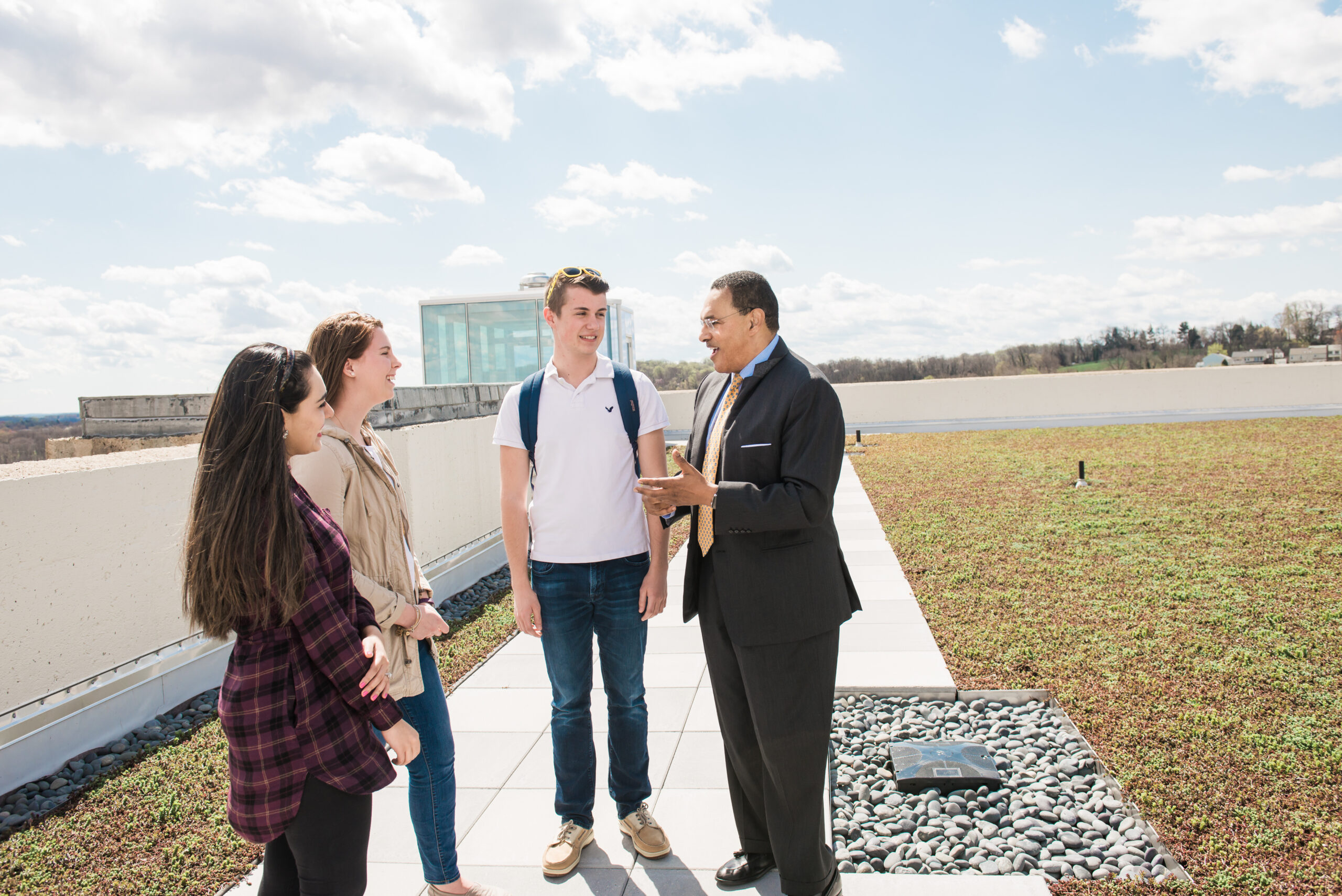For 25 years President Freeman Hrabowski has led UMBC’s growth as a teaching and research powerhouse with a reputation for inclusive excellence, in partnership with colleagues across the university, the state, and the nation. Recently, several media outlets have asked him to share what he’s learned along the journey, and how UMBC can serve as a model for other institutions at various stages of their evolution.
Above all, Pres. Hrabowski emphasizes how creating a campus culture that effectively supports all students requires close collaboration with all university stakeholders. “It’s only when there is a cultural difference, focusing on everybody from faculty, staff to administration, saying the success of students from different backgrounds is a top priority on campus—only then can you make a difference,” Hrabowski said in The Hechinger Report.
Michael Summers, Distinguished Professor of Chemistry and Biochemistry and Robert E. Meyerhoff Chair for Excellence in Research and Mentoring, shared with Hechinger how the Meyerhoff Scholars program, founded at UMBC in 1988, catalyzed a transformation in campus culture, eventually creating an environment where students from all backgrounds are expected to excel. When faculty members are consistently exposed to large numbers of high-achieving minority students, he said, “it changes what that faculty member expects from all students of color.”
Harvey Mudd College is among numerous institutions nationwide to find inspiration in UMBC’s philosophy of inclusive excellence—achieving excellence through (rather than in spite of) welcoming a diverse range of voices to build community together. “Freeman is extraordinary,” Harvey Mudd President Maria Klawe told Inc., in describing how Pres. Hrabowski helped the college rethink their approach to supporting women and minority students in STEM. “After a 20-minute talk, the language just changed,” she recalled. “Unsurpassed excellence and diversity at all levels became part of the strategic plan.”
In EducationDIVE, Hrabowski stressed how important the representation of diverse perspectives is on university leadership teams for those teams to be most effective and to provide role models for diverse students. To accomplish this, he says it’s important to create more pathways for non-traditional candidates to enter university leadership roles, and also necessary to prioritize diversity among staff and faculty at all levels.
These factors come into play not just in broad ways across university administration, but also at the highest levels of campus leadership, Hrabowski told Inside Higher Ed, in their coverage of an Aspen Institute report on the future of the college presidency. He noted, “We have to ask ourselves and our boards, are we developing and identifying talent, faculty and staff who can move into high-level positions, and are we getting them the experience to prepare them for the presidency?”
Additionally, Hrabowski told Inside Higher Ed, as some critics question the value of higher education today, “We have to be able to show our institutions have a particular mission and role to play in our communities and nation and beyond.”
Part of that role is “to prepare our students to understand the importance of the word ‘citizen,’” he further explained in an interview for The New York Times. “The challenge is to make sure that educated people have a good understanding of all the different disciplines and how they connect,” he told “Corner Office” columnist Adam Bryant. “It’s about critical thinking.”
Pres. Hrabowski also emphasizes in his New York Times interview the importance of a sense of critical self-awareness, for both individuals and institutions. “Even when I was a grad student, I would always speak up and say what I thought was not working well,” Hrabowski shared. “So people would tell me, ‘Then you do it.’ I was always working with other people and saying, ‘Let’s figure out how to make this better.’” After all, he has reflected in interviews throughout the spring, critique becomes effective when it is paired with a community’s willingness to continually work toward growth, with a shared vision of excellence in mind.
Image: Pres. Freeman Hrabowski and students on the Administration Building green roof. Photo by Marlayna Demond ’11 for UMBC.

